Dampness can be quite bothersome, and it can also be a health issue if not handled properly. Dehumidifiers can help reduce moisture in the air. Almost every home has a dehumidifier, and they are easy to use. One question that worries many homeowners is how long it takes a dehumidifier to completely dry a room. This happens to be a complicated situation, mostly it depends on a number of things: the size of the room, the humidity levels, as well as the capacity of the dehumidifier, and how sealed the room is.
You can read on to gain more insight on how best to optimize your dehumidifier’s performance, in addition to tips on time management when dehumidifying a room. In case you want to get rid of dampness, improve the quality of air, or reduce allergies, then you are fully covered with the information being offered in this blog.
How Does a Dehumidifier Work?
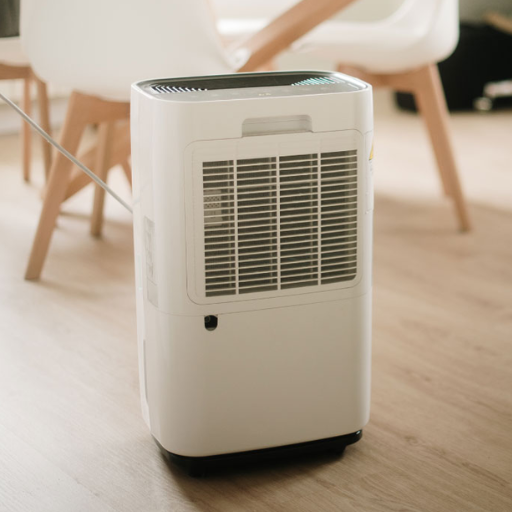
A dehumidifier works by extracting excess moisture from the air to create a healthier, more comfortable indoor environment. It operates by drawing in humid air through a fan, passing it over cold coils to condense the moisture into water droplets, which are then collected in a tank or drained away. The now-dry air is reheated slightly before being released back into the room. This cycle continues until the desired humidity level is achieved. Modern dehumidifiers often include features such as adjustable humidity settings, auto-shutoff, and energy-efficient modes to enhance functionality and convenience.
What is the Mechanism Behind a Dehumidifier?
A dehumidifier works by drawing in moist air from the surrounding environment through a fan. The air is then passed over refrigerated coils, where the temperature drops, causing the moisture in the air to condense into water droplets. This water is collected in a reservoir or expelled through a drainage system. The dehumidified air is reheated using the condensation process and then released back into the room. This cycle repeats, gradually reducing the humidity levels in the space. Modern dehumidifiers may include humidity sensors, adjustable fan speeds, and energy-saving features to optimize performance. By effectively removing excess moisture, dehumidifiers help prevent mold growth, reduce allergens, and improve overall air quality.
How Does a Dehumidifier Remove Moisture from the Air?
The operation of a dehumidifier begins with the drawing in of air from the environment. Hot air is then passed through refrigeration coils where the vapor gets condensed. This is put through a coil heater where the extracted air is further warmed before being sent back into the room. This method is very helpful in controlling the humidity indoors to prevent mold, mitigate allergens or pollutants, and ultimately improve the quality of air within a house.
How Does Room Size Affect a Dehumidifier?
A dehumidifier’s effectiveness is influenced by the size of the room. Larger space require higher capacity pint dehumidifies while smaller spaces require lower capacity. For instance, a 20 pint dehumidifier may be ideal for a 300 foot room and a 50 pint one is best suited for 1500 foot rooms. A poorly dimensioned dehumidifier can cause problems in a room, be it an underpowered unit that can’t effectively remove humidity or an oversized unit that cycles too fast. The volume of space with the surrounding water vapor has to be taken into consideration when choosing a dehumidifier.
How Long Does It Take for a Dehumidifier to Dry a Damp Room?
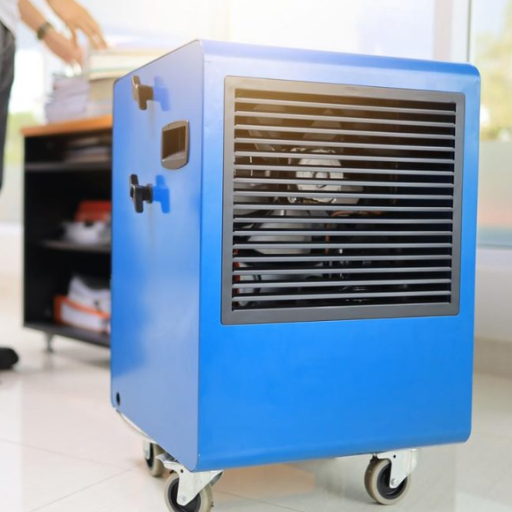
A dehumidifier’s ability to remove dampness from a room is influenced by several factors such as the size of the room, dehumidifier capacity, initial humidity level, and ventilation. On average, it can take anywhere from a few hours to several days. When considering moderately damp rooms with appropriately sized dehumidifiers, results can be expected within 8-12 hours. In cases where areas are severely moist or have poor airflow, achieving optimal humidity may take days of continuous use. Adjusting the hygrometer in the room regularly will optimize the monitoring process for humidity level.
What Factors Influence the Time It Takes to Dry Out a Room?
Several factors influence how long it takes to dry out a room, and understanding these can help optimize the process:
Level of Humidity – High initial humidity levels will require more time for a dehumidifier or ventilation method to remove moisture effectively. The greater the moisture saturation, the longer it will take to achieve a comfortable dryness.
Room Size and Volume – Larger rooms or spaces with high ceilings contain more air and thus more moisture, requiring additional time to dry out completely. Compact areas, on the other hand, dry faster due to their smaller volume.
Air Exchange and Ventilation – Proper air circulation accelerates drying. Using fans, opening windows, or ensuring good natural airflow boosts the moisture removal process. Closed rooms with little ventilation take much longer to dry.
Dehumidifier Capacity – The efficiency of a dehumidifier is critical. Larger-capacity models extract moisture at a faster rate, significantly reducing drying times, especially in damp conditions. Poor or low-capacity devices may prolong the process.
Temperature of the Room – Warm air holds more moisture, so higher temperatures can speed up evaporation and drying. However, excessively damp environments may require cooler conditions to make dehumidifiers function more effectively.
Optimizing these factors together ensures quicker and more efficient drying of any space.
Does Humidity Level Impact How Long a Dehumidifier Takes?
Certainly, the humidity level profoundly affects the operational duration of dehumidifiers. In extremely humid settings, the device requires a longer time to getting rid of moisture to the level needed, as the amount of water vapor which needs to be removed from air is higher. However, the devices placed in smaller spaces, the dehumidifier reaches the target level sufficiently faster. In addition, in the room’s dimensions, how humid the room is, and what other devices are present within the room (the dehumidifier’s capacity) can also change the applied intended duration. To achieve best results from the dehumidifier, it has to be suited to the room in use.
How Long Will It Take for a Portable Dehumidifier to Work?
Depending on a myriad of factors, it can take a portable dehumidifier anywhere from a couple of hours to a few days to start working. From my experience, those dealing with smaller spaces with moderate levels of moisture should see results in about six to twelve hours. Of course, it may take a few days for the lower pint-rated units, while higher-rated ones can succeed exponentially faster. To assist the portable unit in removing moisture levels, seal all windows and doors to maximize the area, then position the machine in a central location. Following these steps will minimize the time required for the portable dehumidifier to begin working.
Is It Better to Run a Dehumidifier at Night or Day?
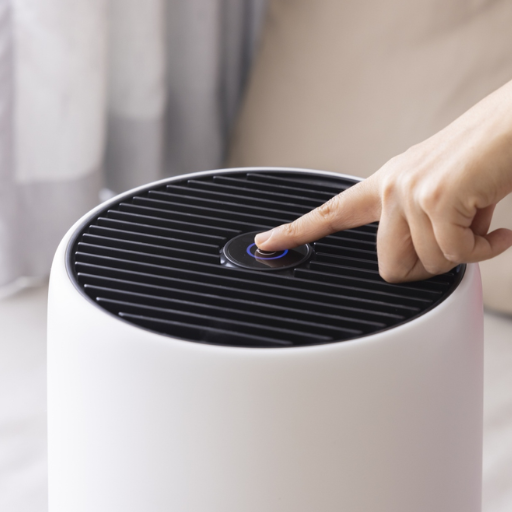
The ideal time to run a dehumidifier depends on the specific needs and conditions of your space. Running it during the day is typically effective if humidity levels are highest due to daytime activities like cooking, showering, or ventilation from outside air. However, running it at night might be beneficial in quieter environments where the unit’s noise could be less disruptive, especially when aiming to maintain consistent humidity levels overnight. For optimal results, consider a 24-hour operation if humidity is persistently high, or use a timer or built-in humidistat to manage usage efficiently.
What Are the Benefits of Running a Dehumidifier at Night?
Running a dehumidifier at night has several advantages. First, it helps maintain a comfortable sleeping environment by reducing excess humidity, which can make the air feel sticky and uncomfortable. Lower humidity levels can also improve indoor air quality, reducing allergens like dust mites and mold that thrive in damp conditions. Additionally, running the dehumidifier during nighttime hours can take advantage of off-peak electricity rates, potentially lowering energy costs. The consistent operation overnight ensures that moisture levels stay balanced while you sleep, contributing to better overall comfort and health.
Is Running a Dehumidifier During the Day More Effective?
From my research, running a dehumidifier during the day can be effective, but it largely depends on your specific needs and schedule. Daytime operation is beneficial if your home experiences high humidity levels while the sun is out, as this is often when moisture buildup from outdoor heat occurs. Additionally, running the dehumidifier during the day may align better with your ability to monitor its performance and make adjustments if needed. However, keep in mind that daytime electricity rates can be higher in some areas, so it’s essential to weigh the potential energy costs against the benefits of daytime operation for optimal humidity control.
How to Optimize Dehumidifier Use for Best Results?
Choose the Correct Placement
Place your dehumidifier in the room with the highest humidity levels or in areas prone to dampness, such as basements or bathrooms. Ensure it is positioned away from walls and furniture to allow for proper air circulation.
Set the Right Humidity Level
For optimal comfort and to prevent mold growth, set the device’s humidity level between 30–50%. Many modern dehumidifiers come with built-in hygrometers to help you monitor and maintain this range.
Regularly Clean the Filter and Drain the Tank
Clean the air filter periodically to ensure efficient operation and good air quality. Empty the water tank daily or opt for a dehumidifier with a continuous drainage option to reduce maintenance.
Run It During High Humidity Periods
Operate the dehumidifier during times of peak humidity—often during the day or after activities like showering or cooking. Use built-in timers or smart features to further customize operating hours.
Maintain Proper Room Temperature
Dehumidifiers work best in temperatures above 60°F (15°C). If temperatures drop, consider a unit designed for lower-temperature operation to prevent freezing and inefficiency.
Inspect for Energy Efficiency
Check for an Energy Star-rated model to reduce electricity costs while maintaining performance. Additionally, turn off the dehumidifier when room humidity is under control to conserve energy.
By following these steps, you can maximize your dehumidifier’s efficiency and prolong its lifespan, ensuring a comfortable and moisture-controlled environment.
What Size of the Room Requires a Different Dehumidifier Capacity?
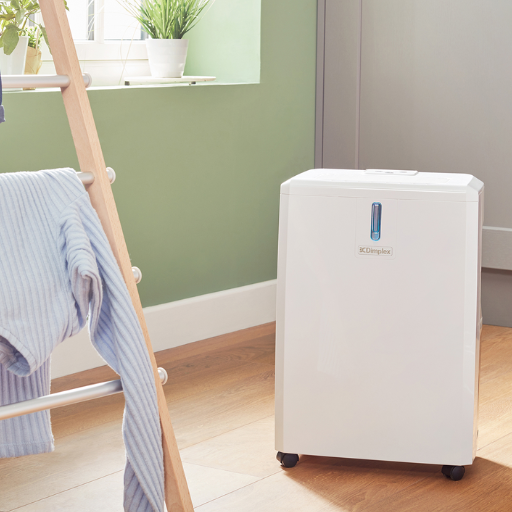
The capacity of the dehumidifier you require is largely based on the area of the room. For small spaces such as bathrooms or closets up to 300 square feet, a 20-30 pint capacity dehumidifier is often sufficient. For medium sized rooms, square footage between 500 to 1,500, the requirement fluctuates based on humidity levels and generally falls between a 30-50 pint model. For larger spaces that are over 1,500 square feet, it is advisable to use a 50-70 pint capacity dehumidifier to ensure effective moisture control. Assess the specific requirements of the area to accurately choose the model best suited for the space.
How to Choose the Best Dehumidifier for a Small Room?
When choosing the best dehumidifier for a small room, consider the room’s size, the level of humidity, and your specific needs. For spaces up to 300 square feet, a dehumidifier with a 20-30 pint capacity is generally sufficient. Look for compact and portable designs that can easily fit into smaller spaces, such as bedrooms, offices, or closets. Energy efficiency is another crucial factor—select a model with an Energy Star certification to save on electricity bills. Pay attention to additional features like a built-in hygrometer to monitor humidity levels, an auto shut-off function to prevent overflow, and a quiet operation mode for minimal noise. Finally, ensure the dehumidifier can handle any specific challenges, such as high humidity or poor ventilation, to maintain a comfortable and healthy environment in your small room.
What Capacity of the Dehumidifier is Needed for Larger Spaces?
When dealing with larger areas, considering cubical space along with the associated humidity levels is important for maintaining optimal dehumidifier capacity. A 30 pint dehumidifier is appropriate for areas slightly over 500-1000 square feet with moderately high humidity, while a 50 pint model works better for high humidity situations, or rooms up to 1500 square feet. Beyond 2000 square feet, extremely damp conditions will make it optimal to use a 70 pint unit or larger. For best performance across multi-purpose areas, having adjustable drainage and setting options will ensure better control of varying moisture levels.
How to Run a Dehumidifier Efficiently?
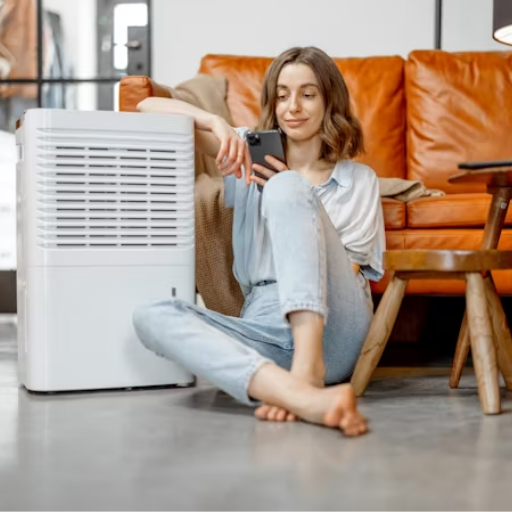
To run a dehumidifier efficiently, start by placing it in a central, open area for optimal airflow. Close windows and doors to concentrate its efforts and avoid introducing more humidity. Regularly clean the filter and ensure vents are unobstructed for maximum efficiency. Set the humidity level between 30-50%, depending on your comfort and local climate. For continuous operation, use a model with an automatic shut-off or humidity sensor to prevent over-dehumidifying. Additionally, empty the water reservoir regularly or use a drainage hose if available to maintain consistent functionality. These steps help maximize performance while saving energy.
What Are the Best Practices for Using a Dehumidifier?
In order to set your dehumidifier for optimal performance, it is recommended to position the unit in a central open area with good airflow, avoiding placement near walls and furniture that may block airflow. Adjust the humidity level to best fit your surroundings, ideally within the 30-50% range for comfort and moisture control. Clean the filter regularly to maintain operational efficiency and improve air quality. Select models with humidity sensors or automatic shut-off features to avoid over-dehumidifying and wasting energy. If your unit has a water reservoir, routinely empty the tank or attach a drainage hose for continuous operation. Additionally, keep an eye on the temperature since most dehumidifiers are less effective at lower temperatures unless otherwise marked as “suitable for cold spaces.” Following these suggestions will ensure optimal dehumidifier operation while maximizing energy savings over time.
How Often Should You Empty the Water Tank?
How often you should empty the water tank largely depends on the humidity levels in your space, the size of the tank, and how frequently the dehumidifier is running. Personally, I find that in more humid conditions, I may need to empty the tank once or twice a day, especially if it’s a smaller unit. However, with a larger tank or lower humidity levels, it might only require emptying every few days. To avoid any inconvenience, I prefer using a continuous drain option when available, as it saves time and ensures uninterrupted operation.
What Maintenance Does a Dehumidifier Need for Optimal Performance?
To maintain optimal performance of a dehumidifier, regular and consistent maintenance is crucial. Start by cleaning or replacing the air filter every couple of weeks, as a clogged filter reduces efficiency and can compromise air quality. Empty the water tank frequently or ensure the continuous drain option is functional to prevent overflow and bacterial growth. Periodically, clean the coils with a soft brush or vacuum to remove dust buildup, which can obstruct proper airflow. Inspect the dehumidifier’s vents and grilles to ensure they are unobstructed and clean them as needed. Additionally, monitor the unit for unusual noises or reduced performance, as these could indicate underlying issues requiring professional servicing. Proper maintenance not only extends the lifespan of your dehumidifier but also ensures it operates efficiently and effectively in controlling indoor humidity levels.
References
Frequently Asked Questions (FAQ)
Q: How long does it take for a dehumidifier to dry out a room?
A: The time it takes a dehumidifier to dry out a room depends on several factors, including the size of the dehumidifier, the room size, and the relative humidity. Typically, it can take anywhere from a few hours to 72 hours for a room to feel dry, but experts say it’ll take longer if the room isn’t properly ventilated.
Q: What factors affect how long a dehumidifier will take to dry out a room?
A: The time it takes to dry out a room depends on the room size, the water level in the air, and the size of the dehumidifier you choose. Knowing how long you need to keep the dehumidifier running is crucial for efficiency.
Q: How can I choose the right dehumidifier for my room?
A: You must choose a dehumidifier that is suitable for the size of your room. A dehumidifier that is too small will take longer to dry out the space, while one that is too large may be unnecessary. Think of your room’s dimensions and the relative humidity when selecting a model.
Q: Why might it take longer for a dehumidifier to start working effectively?
A: It may take longer for a dehumidifier to start working if the room isn’t sealed properly, if there is excessive moisture, or if the dehumidifier is not ideal for the room size. Ensuring that the air back into the room is minimized can help increase efficiency.
Q: When should I expect my room to feel dry?
A: Generally, a room should feel dry within 24 to 72 hours depending on the relative humidity and the effectiveness of the dehumidifier. However, if the room still feels damp, you may need to use a dehumidifier for a longer period.
Q: Can the type of dehumidifier affect drying time?
A: Yes, the dehumidifier you choose can significantly affect drying time. Larger units with greater water extraction capabilities can remove more water from the air, potentially reducing the time it takes to dry out your room.
Q: Is it necessary to keep the dehumidifier running continuously?
A: It depends on the moisture level and room size. Initially, you may need to keep the dehumidifier running continuously until the room feels dry. Afterward, you can adjust the settings or use it intermittently based on the relative humidity.
Q: How can I tell if my dehumidifier is working properly?
A: You can tell if your dehumidifier is working properly if the water level in the collection tank increases and the room gradually feels drier. If it seems ineffective, consider checking for leaks or ensuring the dehumidifier is correctly sized for the space.
Q: Should I buy a dehumidifier with extra features?
A: Buying a dehumidifier with features like adjustable humidity settings, timers, and automatic shut-off can be beneficial. These features can help manage how long the dehumidifier runs, contributing to energy efficiency and convenience.



